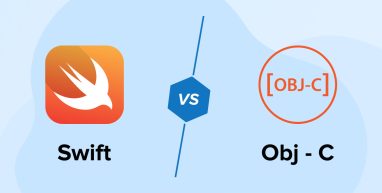
When we talk about a deep interest in native iOS app development or a strong desire to create apps for the iOS platform, it becomes necessary to be familiar with the various iOS programming languages so you can pick the one that’s right for you. Well, iOS programmers mostly utilize these two programming languages: Swift and Objective-C. Both the languages have their own advantages. According to Apple, Swift is 2.6 times faster than Objective C, while Objective C has amassed a wide variety of resources as it has been in use since 1984. Choosing between both the languages might be difficult, but perhaps this post will help you make the right decision. This article compares and contrasts the two languages and provides additional useful information on Swift vs Objective-C to help you make an informed decision.
1. What is Swift?
Swift is an excellent modern programming language for creating applications for iOS devices. Combining the best of current linguistic thought with the technical savvy of Apple’s larger community and the many contributions of its open-source community, Swift is a programming language that is secure, quick, and engaging. Both the productivity and the development friendliness of the compiler and language have been fine-tuned without any sacrifice.
Additionally, Swift supports dynamic libraries.

For those who are just starting out in the programming world, Swift is a great option. It’s a commercial-grade language with the expressiveness and fun of scripting. Swift playgrounds allow you to write object-oriented code and quickly see the results of your experiments without the expense of developing and running an app.
- Swift’s use of current programming paradigms eliminates vast classes of frequent programming mistakes.
- Prior to each usage, variables are always set to their default values.
- Out-of-bounds mistakes in array values are validated.
- Overflow in integers is tested.
- With optionals, you can be certain that nil entries are dealt with in a clear and consistent manner.
- The handling of memory is fully automated.
Compiling and optimizing Swift code maximizes the performance of today’s iOS applications. The underlying premise behind the design of the language and standard library is that the most natural method to develop custom software should also be the most efficient. Swift is great for writing anything from “Hello, world!” to entire code for an application because of its mix of security and speed.
Swift’s current, compact syntax, robust type inference and pattern matching make it possible to express even the most intricate concepts in the most straightforward terms. Thus, not only is it simpler to compose, but also to read and keep up with the code.
Swift has been in development for quite some time, and it is still growing and improving.
1.1 Advantages of Swift
Some notable benefits of using Swift are:
1.1.1 Quicker and Efficient
Swift is nearly twice as efficient as Objective-C due to its straightforward syntax. Compared to Objective-C, Swift’s additional versions make programming easier and more efficient.
Automatic reference counting (ARC) feature safeguards developers’ time by facilitating the management of an app’s memory consumption.

1.1.2 Straightforward Coding
Like Java, JavaScript, and other C-based languages, Swift algorithms are straightforward and simple to create and read. Swift is an up-to-date programming language with a clear and succinct grammar.
1.1.3 Open-Source Development Community
Open-source communities are groups of users who hold a shared interest and work collaboratively on projects and exchange information related to that interest. The Swift open-source community is a great place to meet other people interested in learning more about the language and exchange ideas.
1.1.4 Playgrounds Availability
To get a feel for the Swift algorithm and programs, you may install the playgrounds app for your iPhone, iPad, or Mac. Playgrounds like this may help even a complete Swift newbie learn the language quickly.
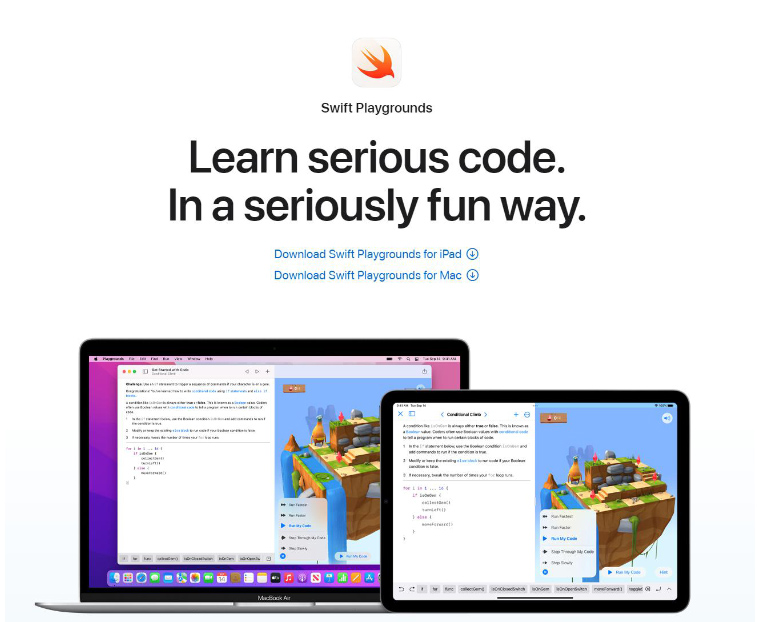
1.1.5 Safer and Less Error-Prone
Swift’s architecture was created to prevent certain types of vulnerabilities in programs. It contains a safety feature in the compiler that reduces the potential for errors while developing code and hence keeps your applications safe from repeatedly crashing during use.
1.2 Disadvantages of Swift
There are certain limitations to the Swift programming language.
1.2.1 The Language is Still New
Swift was developed in 2014, although Objective C has been around since 1984. As it is a relatively new programming language, Swift is updated often, rendering it incompatible with older iOS releases.
1.2.2 Backward Compatibility Issues
Having newer software releases be compatible with older system interfaces and data is what is meant by “backward compatibility.” As Swift develops, it becomes obsolete with prior iterations of the iOS platform. Swift only works with projects that target macOS 10.9 and iOS 7, forcing programmers who are required to support previous platforms to stick with Objective-C.
1.2.3 Interoperability with Third-Party Tools and IDEs
Because of Swift’s frequent modifications and lack of backward compatibility, it might be difficult to locate third-party tools and IDEs that are compatible with the language. Nevertheless, you may use Swift with IDEs like Atom and AppCode, as well as with Swift libraries.
2. What is Objective-C?
Objective C language is used for many general purposes and is an object-oriented language. It was built by Brad Cox and Tom Love at their firm Stepstone in the 1980s. Objective C is an extension of C that provides syntax and semantics to transform C into an object-oriented programming language. In computer programming, this is sometimes referred to as Obj C. It’s the language behind Apple’s OS X and iOS application programming interfaces. With Objective-C, the C programming language is expanded with new capabilities. The extension for Objective C source code is “.m”. You can check this tweet by Ken Kocienda where he added more value on this.
Objective-C remains one of the best languages ever for creating apps and frameworks. Mac OS X, iOS, and the App Store all sat on the foundations of this great language. There would be no iPhone without Objective-C.
— Ken Kocienda (@kocienda) January 23, 2021
2.1 Advantages of Objective-C
There are innumerable advantages to using Objective-C as a programming language. Some examples include;
2.1.1 Easy to Use and Effective
Learning the fundamental syntax that forms the basis of Objective-C is a rather simple process. Because of its intuitive design, the Objective-C programming language simplifies app development and maintenance. It’s not surprising that Objective-C is often chosen as one of the first languages for CS courses.
2.1.2 A Plethora of Resources
With over 30 years of development and use, Objective-C has amassed a wide variety of resources. Apple, as well as third-party developers and NeXT’s XCode and Cocoa framework, fall within this category. This plethora of resources is crucial to the health of Apple’s OS and the ease with which programmers may work with it.
2.1.3 Compatible with Every iOS Device
Unlike Swift, which is only interoperable with the most recent iOS releases, Objective-C can be used with almost any iOS device and operating system. This is because many Apple programs have been built on it throughout the years, and therefore their code is designed to be compatible with it.
2.1.4 Potential for Growth
The developers behind Objective-C intended for it to be simple and fast to add new features to an existing program. That makes it simple for developers to incorporate brand-new features into pre-existing programs with minimal adjustments.
2.1.5 Libraries Packed with Features
The creators of Objective-C stocked the programming language with a substantial library of pre-installed features that simplify code writing. There are avenues for developers to add their own user-designed functionalities to the library.
2.2 Disadvantages of Objective-C
Objective-C has many benefits, but it also has some significant drawbacks.
2.2.1 Time-Consuming
Compared with modern programming languages like Swift, Objective-C is slower to code. Time spent writing and debugging Objective-C code can increase software development costs and push back the release dates of software products.
2.2.2 Complicated and Tedious Syntax
Writing in Objective-C is more laborious and challenging than in other recent and popular programming languages whose syntax is similar to straightforward contemporary English.
3. Swift vs Objective-C: Key Comparison
It’s good to often evaluate and contrast various technologies and programming languages. The motivation for doing so should be twofold: first, to satisfy your own wants; second, to satiate the necessity to teach the world around you.
Although there are likely hundreds of potential traits to evaluate, here, we narrowed our attention to the ones we felt were most crucial. All of these factors affect the time, money, and effort required to create an iOS app. What follows is a comparison of Swift vs Objective-C and ranking that should assist you to choose which technology would be most suitable for your undertaking.
3.1 Development Environment
The enchantment of software creation occurs in the development setting. How user-friendly the interface is, how much it costs, and what other options are available to you are all important considerations.
The Xcode integrated development environment (IDE) is the standard for creating iOS and OS X apps in Objective-C. Even though there are alternatives to Xcode, like AppCode and Microsoft’s Visual Studio Code, these IDEs still require Xcode in order to function.
Xcode’s Software Development Kits (SDKs) supply you with pretty much everything you require to create an iOS app. There are a wide variety of tools, compilers, APIs, and frameworks available. As an added bonus, you may make use of pre-built pieces in your app that have already been designed.
The Cocoa framework and, more importantly, the Cocoa Touch framework, which you will use to create iOS applications, are both built into Xcode. If you insist on using Swift, though, Cocoa Touch makes it possible to build apps for both the Apple Watch and the Apple TV.
However, that’s not the only variant of the development setting. In addition, there is a tool called Swift Playgrounds. Not only is it a great place to learn Swift language, but it can also be used as a testing ground for individual modules without requiring a full application build. Just write your solution code in Playgrounds and see how it performs right away whenever an idea strikes.
Swift allows you to keep using the same tools and frameworks as you would with Objective-C while also providing access to cutting-edge solutions that expand your options. Swift wins this time.
3.2 Performance
The greater the efficiency, the more effective and appropriate the technology. The user experience (UX) is enhanced, refactoring is simplified, and maintenance is simplified more with increased performance.
Swift, according to Apple, is 2.6 times faster than Objective-C. Swift, a brand-new programming language designed specifically for speed, makes this feasible.
Even though Apple has added a trash collector to Objective-C, the language is still not as fast as Swift. Swift is more efficient than Objective-C because of its simpler syntax and built-in support for type verification at compile time. Swift utilizes Automatic Reference Counting (ARC) to improve memory management. Furthermore, Swift’s capability for Dynamic libraries helps improve application speed. When compare Swift vs Objective-C, Swift will continue to gain ground.
3.3 APP User Interface
As they are both native to iOS, you can rest certain that your app will display and perform as expected. Yes, it will, either option you go with. The main distinction is in UI development simplicity and iOS adaptability.
Since Objective-C has been there long before the mountains, your software should be compatible with all iOS versions. However, iOS 7 is required for Swift development. This implies you’ll have to do some research into your user base to see if you can safely restrict access to just iOS devices launched after 2013. There shouldn’t be a problem since, frankly, not many people are still using gadgets that are 7 years old.
Apple has launched SwiftUI to simplify UI development. This user interface editor for iOS 13 is a part of Xcode 11. It simplifies the process of creating native user interfaces for all Apple devices. Building an interface may be done either through code or by making changes to the preview. The preview and the source code update simultaneously.
As it stands, neither side has an advantage. It’s likely, though, that Swift’s edge will increase with time.
3.4 Toolkits
When developing something sophisticated, a regular IDE isn’t adequate. Developers often resort to supplementary toolkits to achieve optimal ease of use. Programmers who work in Objective-C or Swift are similar. It’s important to note that the available supplies are not constant.
Due to Objective-extensive C’s background, several development resources are available from both Apple and other firms. New Objective-C programming tools are unlikely to be developed very soon.
However, due to Swift’s status as an open-source language, a wide variety of third-party firms and individual contributors have developed a wide variety of useful tools for working with Swift. In addition, Apple provides a wealth of resources for optimizing your development efficiency. Apple has just unveiled a number of new tools, including PencilKit for use with the Apple Pencil, SiriKit for use by third-party apps, and MapKit for more UI customization options.
Even though the margin is narrow, Swift again comes out on top. Swift’s environment, therefore, will evolve at a far quicker rate than Objective-C’s in the future.
3.5 Speed of Coding
A faster coding pace reduces the total cost of app development and speeds up the process of getting it to market. Both Objective-C and Swift are native to iOS, but it doesn’t make them identical. The language Swift is significantly more up-to-date. The reduced syntax also makes it easier to understand by humans. What this really implies is that it’s less of a headache to pick up.
Furthermore, it is estimated that a Swift program will have 30% less lines of code than an Objective-C app doing the same thing. Most notably, when Lyft switched from Objective-C to Swift, they had to eliminate nearly 60 % of their code. The development time, number of bugs and the cost of testing may all be reduced by cutting down on the quantity of code.
3.6 Documentation
You just can’t overstate the value of a well-documented project. Knowing the language and its resources well can help you avoid common pitfalls.
Each language has copious resources to help you learn it. The major reason why Objective-C was chosen was that it has been around for so long (almost 30 years). There is a manual for it in Apple’s library. However, Swift’s documentation is always being improved. More recent resources have been created for this language. Because it is open-source, you will have access to a wider variety of outside resources. The Apple developer portal and the Swift page on Apple’s website are good places to start. Swift also has its own repository on GitHub.
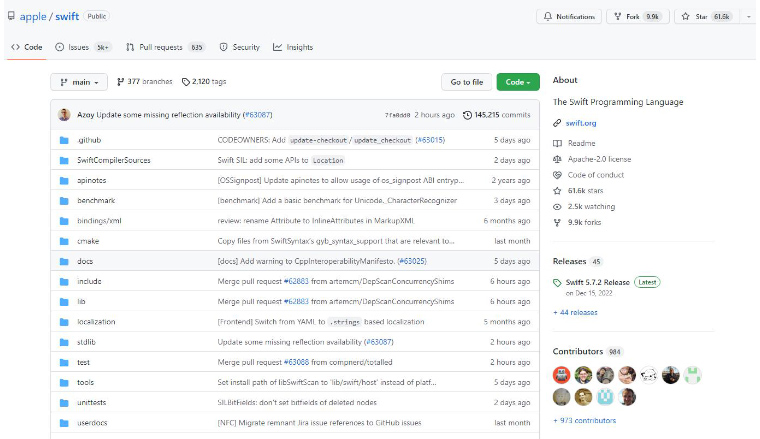
3.7 Competence of the Platform
In Swift vs Objective-C, Objective-C has been around for quite some time. Is that supposed to imply anything about its level of maturity? Swift’s design is informed by Apple’s prior work with Objective-C.
Swift, despite its brief history, is not immature since it builds on a rich legacy. Furthermore, version 5.2.4 is another piece of evidence that Swift matures at a significantly quicker rate.
Apple is always working to make Swift your go-to language. Swift is becoming more of a community, and while Objective-C has been around longer, it may not be as developed as the ecosystem around Swift.
3.8 Community & Support
When you have solid backing, you can be assured that you’ll have access to the knowledge you need to grow and thrive. Being a member of a community of professionals who will assist you with their expertise and wisdom is important in addition to technical support.
Even while Apple continues to back Objective-C, it has never been released as open source. Swift, on the other hand, is open-source, so you may examine its inner workings and learn its fundamentals with more ease. In any case, that’s not all. More individuals working on more programs and more resources made accessible to Swift developers is a direct result of the language’s open nature.
Even though the Objective-C community has been around for almost 30 years, it is expected to shrink in the near future. The number of developers who could lend you a hand is steadily decreasing as a result of the rising popularity of Swift among beginners and the consequent decline in the supply of programmers with the necessary skills. About 3500 Stack Overflow users now identify as utilizing Objective-C, while more than 6,000 people say they’re proficient with Swift. However, the Swift development community is crucial. The Swift framework has been so successful that other firms have created their own versions (like IBM).
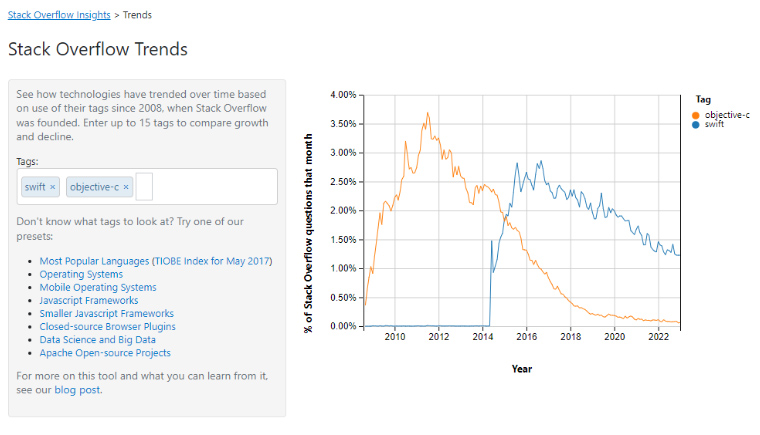
3.9 Stability
Over 30 years have passed since the introduction of Objective-C. Launched in 2016, 2.0 is the most recent version to date. In that state, it will be as stable as it gets. We are aware of any issues that may exist.
Since the introduction of Swift 5 in March 2019, Swift has only been around for 6 years which says that Swift is less stable than Objective-C.
3.10 Talent Pool
Your ideal solution may be the most effective ever seen, but it would be of no value without the assistance of experts. It is critical for a business to understand the availability and cost of its in-house software engineers and programmers.
Swift’s popularity has increased dramatically, jumping from position 13 in 2019 to number 11 in 2020, according to the latest Tiobe Index. Only half of those who voted preferred Objective-C to Swift. There will be fewer Objective-C programmers and more Swift programmers in the future.
A few factors contribute to such a conclusion. To begin, Apple is likely to gradually phase down support for Objective-C. You can keep tabs on Swift’s progress and marketing efforts. Second, to start with Swift as a developer is a breeze. Third, being an open-source language, Swift helps communities thrive.
4. Difference between Swift and Objective-C
| Objective-C | Swift |
|---|---|
| Objective C is a general-purpose programming language that was developed with the intention of extending C with object-oriented features. | Swift is a high-level language designed for a variety of purposes, with a focus on security and efficiency. |
| It was created by Brad Cox and Tom Love of Stepstone, Inc. | It was created by Chris Lattner and several other Apple programmers who eventually joined. |
| Both C and Smalltalk served as inspirations. | The languages Objective C, Rust, Ruby, and Python served as inspirations. |
| In 1984, Objective C made its debut. | In 2014, Swift made its debut. |
| Objective C is very adaptable. | Swift is a predefined language. |
| The GNU General Public License covers the use of Objective C. | The Swift programming language is available to the public and is distributed under the Apache Software License. |
| The original intent of Objective C was to implement Smalltalk’s communications capabilities. | Its primary purpose is to facilitate the development of software for Apple platforms, including iOS, macOS, Apple TV, and Apple Watch. |
| Objective-C’s polymorphism is implemented explicitly at compile time. | Straightforward polymorphism in Swift is nonexistent. |
| It uses YES and NO values and also BOOl. | It uses true and false values. |
| When compared to Swift, there is a dearth of suitable templates for use with Objective C. | Unlike Objective C, Swift offers a wider variety of template types. |
5. Swift vs Objective-C: Which One to Choose?
As a developer, there could be many scenarios when they would consider many factors affecting the whole programming process. Here are some of the most primary ones that you must consider while comparing the languages.
- Performance: In comparison of Swift vs Objective-C, Apple claims that Swift is 2.6 times quicker. Most accounts, however, assert that the two move at somewhat different rates. Further, the Low-Level Virtual Machine Compiler, iOS, and SDK are all shared between the two languages.
- Maintenance: In spite of Swift’s simplicity, Objective-C remains difficult to maintain. Because developers have two files to manage. The Swift programming language, on the other hand, makes upkeep simple.
- Secure Protection: Swift’s enhanced security stems in part from the fact that it is a memory-safe and type-safe language. Additionally, it has an easily digestible, well-documented codebase. As a result, unlike with Objective-C, developers can quickly identify and fix bugs.
- Coding Complexity: It’s still important to consider the code’s complexity. Swift makes writing code extremely simple by requiring only a small number of lines. The opposite is true in Objective-C, where it can cause the program to crash.
- Developer Usage: People have begun picking up Swift now that it’s getting old enough to be useful. iOS developers tend to switch to Objective-C due to its relative simplicity and the fact that it has been around longer and requires less skill.
6. Conclusion
Swift, depending on the above debate, is ideal for cutting-edge and lightweight programs in the developers’ community. Swift, meanwhile, may initially present significant challenges for large enterprises with existing, vast Objective-C codebases. That being said, Swift has matured into a very capable programming language, and its numerous bugs are being steadily solved, making it the best language for creating iOS applications.


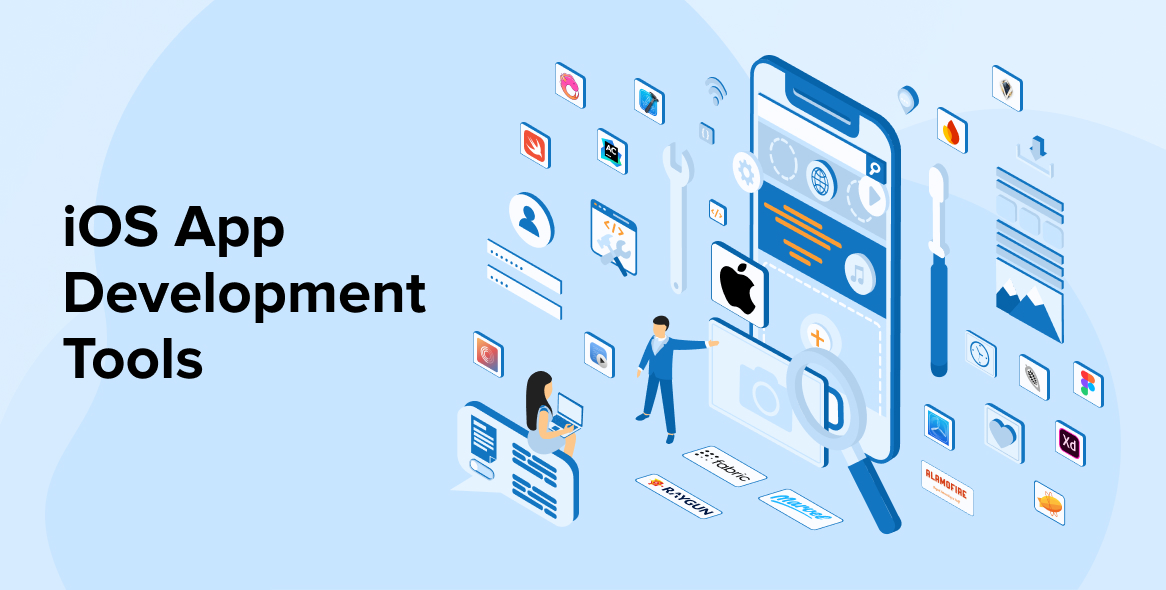

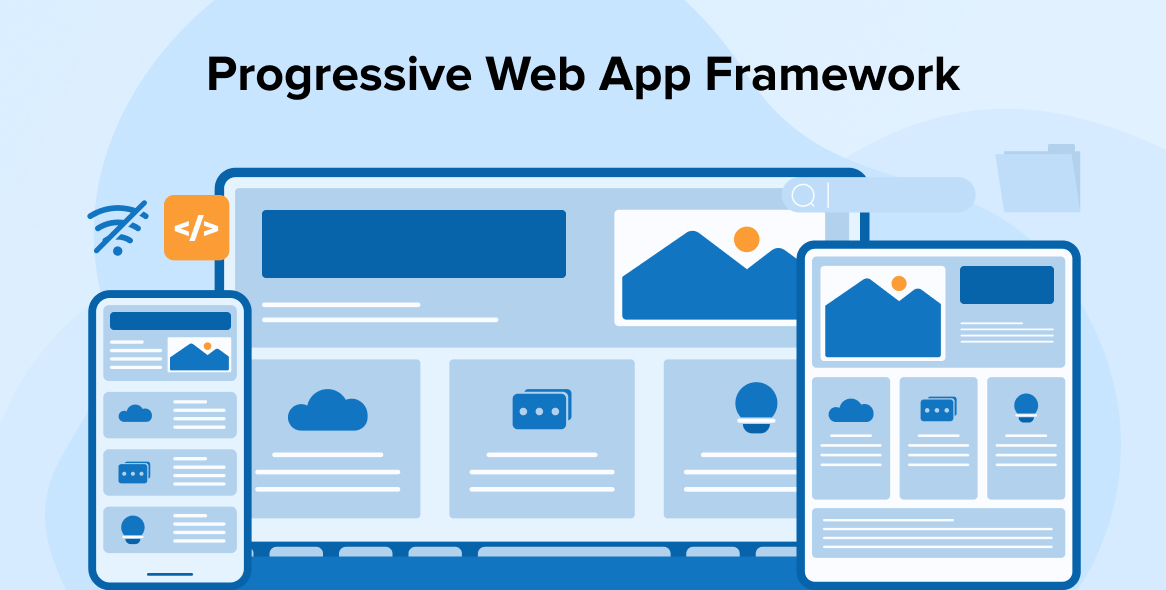

Comments
Leave a message...